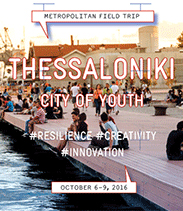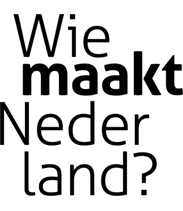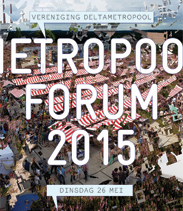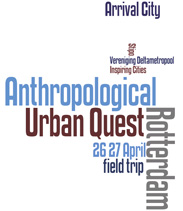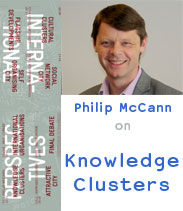SprintCity, a planning support tool for Transit-Oriented Development, has been succesfully applied to cases in The Netherlands. Recently there is a growing interest to apply this tool in other parts of the world, to support policy makers and transit companies in optimizing transport corridors, and help researchers in exploring the mechanisms behind TOD.

SprintCity has been developed over the last 5 years by the Deltametropolis Association, Delft University of Technology and Movares. Its prototype version was made possible by the Next Generation Infrastructures foundation.
Contact
| SprintStad@deltametropool.nl |
Read or download
| Make Space! - book on TOD in the Netherlands |
| SprintCity - project information |
| SprintCity - introduction video |
| Deltametropolis Association - an introduction |
| Update - SprintCity #6 | (PDF)
| Blog article on SprintCity by the Royal Town Planning Association |
| Full report of the SprintCity session in Bangalore | (PDF)
| Scientific paper on SprintCity simulation in Environment & Planning B | (coming soon)
SprintCity, an introduction
Planning support tool SprintCity simulates urban growth and train frequencies along a rail corridor, over a period of 20 years. The purpose of the tool is to give decision-makers insight into the relationship of spatial development and infrastructure, competition between municipalities and the specific qualities and opportunities of each station on a corridor. It also provides a safe platform to experiment with development strategies and collaboration between the different stakeholders.

Transit-Oriented Development (TOD) is a promising urban model for densely populated areas, such as the Netherlands. The complexity of spatial planning and transport integration, as well as the fact that there is not a single responsible authority for TOD, is causing the current suboptimal use of rail infrastructure in The Netherlands. SprintCity was developed to help break these barriers.
SprintCity has been used by more than 750 people, in more than 60 sessions, since 2009. It has been applied on 5 rail corridors in The Netherlands and implementation in Belgium is currently being studied. In principle, it can be used on any transport corridor (including Bus Rapid Transit), both existing corridors with existing and new stations, as well as new corridors or comparative corridor alternatives. Especially these latter applications may be relevant for metropolitan areas in developing countries.

SprintCity, working on an international basis
From the beginning, SprintCity ('SprintStad' in Dutch) has been a collaborative project, involving universities, government bodies and private enterprises. This approach has resulted in a user-friendly and widely tested tool: SprintCity v2.0. We believe that the application and further development of SprintCity should occur internationally. On the one hand, several entities abroad have contacted us to learn about this possibility. Consequently an English version is now being developed for this new group of international users. And on the other hand, co-development on an international scale will no doubt enhance the functionalities and applications of the next versions of SprintCity.
In this manner, the growing SprintCity community will be able to learn from each new experience and from the different policy- and development contexts worldwide. The source code of SprintCity is owned by the project partners, listed above. The data input and results, however, are always shared and made public. At this point, we are engaged with experts and government bodies in the following countries:
Flanders (Belgium)
In 2012 and 2013, there have been multiple SprintCity presentations and workshops in Flanders. For example at Turnhout (Spoorcongres 2013), the Province of Vlaams-Brabant and the University of Leuven, the Artesis University of applied sciences in Antwerp, the | Plandag 2013 | (in collaboration with Mapsup maptables and University of Utrecht). Implementation of the planning support tool on the rail corridor of the Schelde Landschapspark, in the Antwerp region, is being studied in close collaboration with Euro Immo Star, the development branch of NMBS Holding (Belgian Railways).

Sweden
In July 2013, the SprintCity planning support tool was demonstrated during the | ISAGA 2013 | conference. In this international setting, a discussion concerning the possibilities of implementing SprintCity in other European countries, Asia and the Americas was held. It became clear that the local planning challenges differ, according to development phase, planning traditions and socio-economic factors. Cases would range from developing metropolises facing rapid growth and lack of TOD planning to established but suboptimal urban areas facing stagnation and budget cuts. In all situations, however, there is demand for integration of urban development and transport, and interactive tools that quantify and visualize problems and possible solutions. Researchers at the | KTH university Stockholm | will possibly be involved in future SprintCity applications.


India
The first online simulation session of SprintCity was held in July 2013, organized by | Fields of View | (Bangalore and New Delhi) and the Deltametropolis Association (Rotterdam). The 3-hour session was operated from the three locations and facilitated by using Google+ Hangout. The teams in India managed to perform better on TOD at the | Zaancorridor | than the 'Business as Usual' scenario. Download the | full report | or read the | blog post | by Onkar Hoysala.
The application of SprintCity in the Indian context is still being studied. An English version of SprintCity has been demonstrated. The next step could be the implementation of a commuter rail corridor in Bangalore.

China
In 2010, an early version of SprintCity had already been presented in Shenzhen (NGI conference) and discussed with a decision maker of the MTR Corporation in Hong Kong. At the end of September 2013, SprintCity was featured at the | Beijing Design week 2013 |.
Other countries
Brazil - In order to understand the different TOD challenges worldwide, and the possiblities to address them with SprintCity, the planning support tool has been presented to others as well. In January 2013 we were invited by the innovation team of the regional planning department of São Paulo State Government (Inovaday). They were enthousiastic about the collaborative format of the tool, as it permits governments to work across borders and disciplines without establishing new (authoritarian) institutes. The alignment of public transport and urban growth in the metropolitan area of São Paulo is an urgent and complex issue, that requires a pragmatic and collaborative approach.
Australia - In 2012, TOD experts Carey Curtis, Jan Scheurer and Roger Mellor, of the Curtin University (Perth) and RMIT (Melbourne) visited us. It became clear that the fundamental mechanisms behind land use - transport integration are universal and tools like SprintCity could work in different contexts, when customized for the specific problems and in the local language. The possibility to work together on a project in Australia, integrating SprintCity with SNAMUTS, their public transport accessibility benchmarking tool was discussed.
Turkey - Similar possibilities are being explored for the metropolitan area of Istanbul in collaboration with| Embarq Turkey |, an international NGO for sustainable transportation.

SprintCity, the format
In order to include human decision making in the simulation, SprintCity has the format of a role playing game (ideally played by the real stakeholders), supported by a computer model with realistic data input. It features three types of players:
1. The Province/Region-player controls the overall development of the corridor, and needs to find an optimal location for regional functions, such as a hospital or educational facility;
2. The Transport-player controls the time table of the rail services on the corridor, and aims to increase ridership while running a profitable service;
3. The Municipality-players control the land use plans of each station area, and aspire to develop these areas according to previously chosen ambitions and a master plan.
Available train capacity, phased development areas and limited market demand for housing, offices and amenities provide natural bounderies to the system.

|
SprintCity in your city(region)? Interested in applying SprintCity in your country or metropolitan area?
Contact us at | SprintStad@deltametropool.nl |. |
Project partners:
The New Planning is a collaborative research project between Deltametropolis Association and TU Delft. A consortium of academic, civil society, government and market sectors is being created to meet the urgent need for a new model of strategic spatial planning that will keep the Netherlands at the forefront of territorial governance.

 Archief
Archief

























